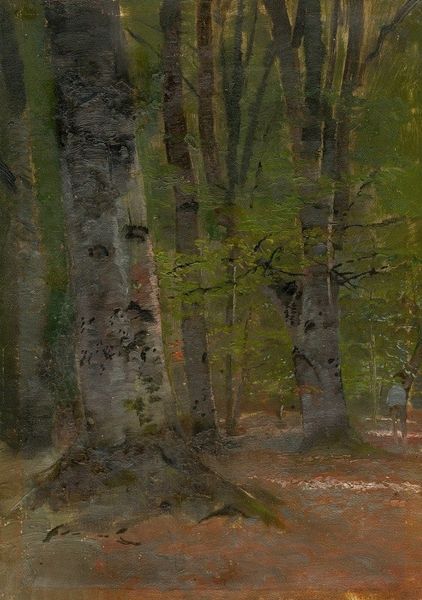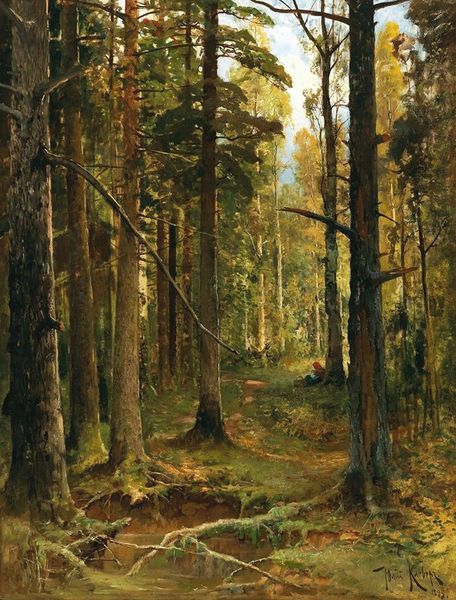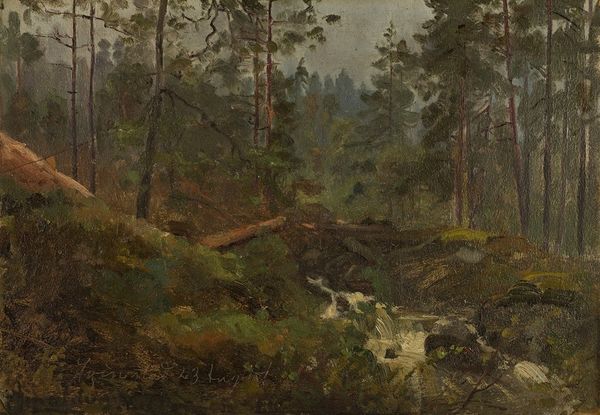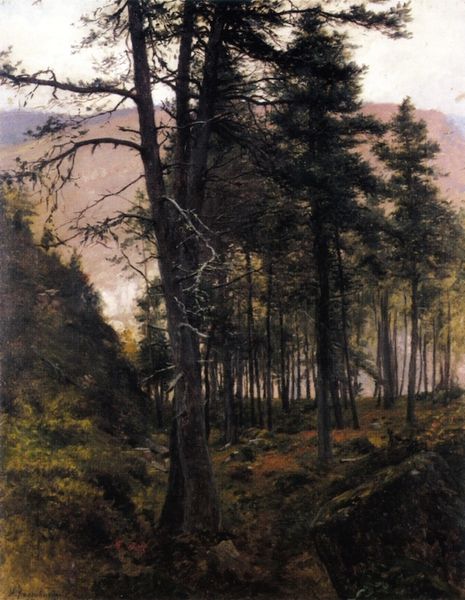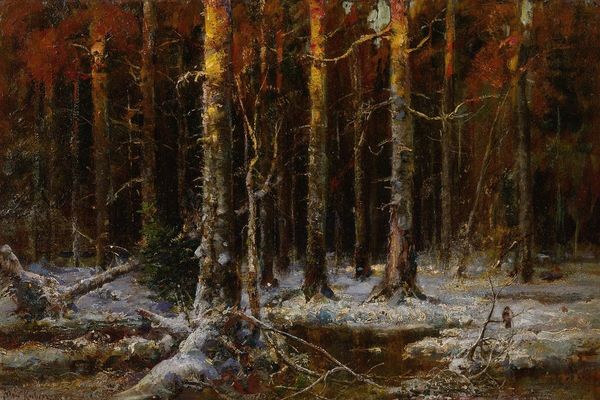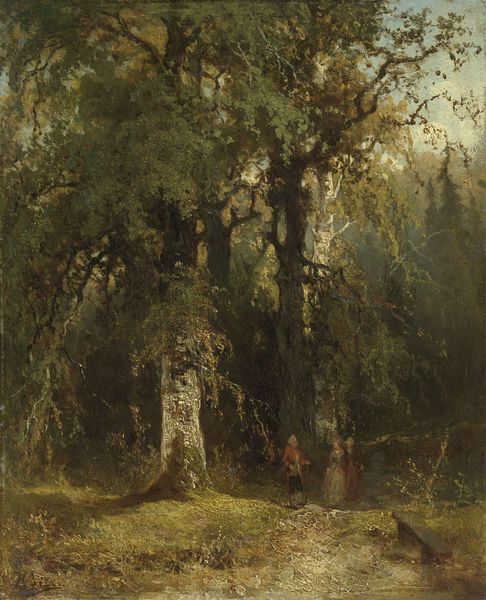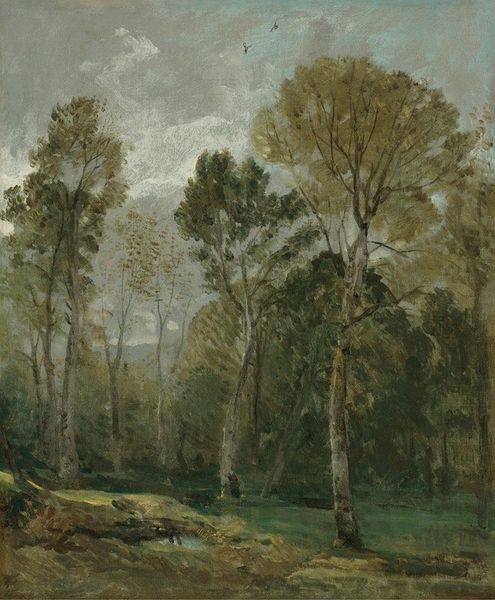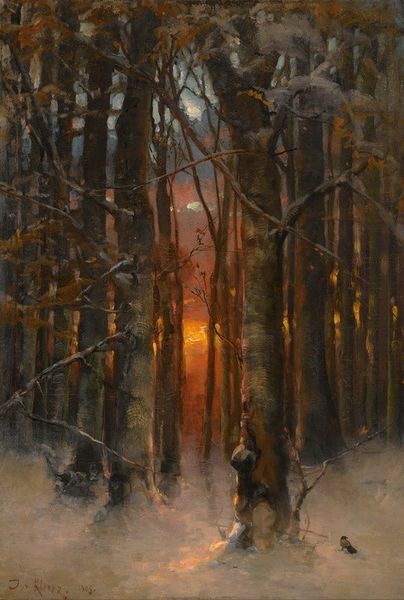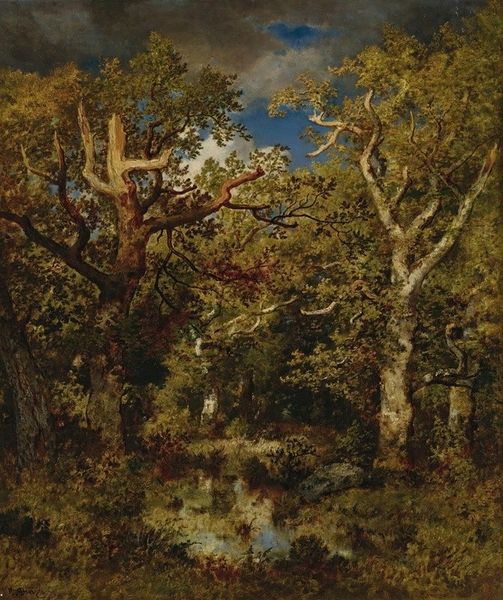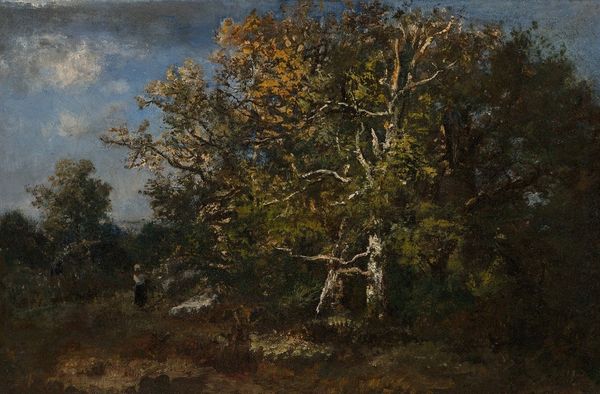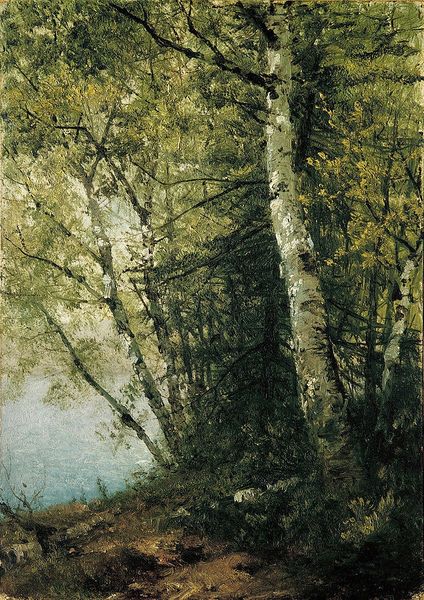
plein-air, oil-paint
#
plein-air
#
oil-paint
#
landscape
#
oil painting
#
romanticism
#
realism
Copyright: Public Domain: Artvee
Editor: Here we have "Winter Landscape at Sunset" by Julius Sergius von Klever, executed in oil paint. There's a stillness, a hushed quality, that I find immediately captivating. What stands out to you? Curator: The composition is remarkable for its use of verticality. The eye is drawn upwards by the stark, slender trees against the fading light. Observe how Klever uses contrasting textures—the rough bark versus the smooth snow—to create a dynamic visual tension. What theoretical frameworks might illuminate its deeper meaning? Editor: Perhaps something semiotic, focusing on the contrast between the naturalistic details and the implied narrative of a fading day? What about the use of light here? Curator: Precisely. The subdued palette, dominated by browns, grays, and the faintest blush of sunset, reinforces a sense of melancholy. This creates a play between positive and negative space in the arrangement of these organic, slender shapes, establishing depth and movement. Could we see this absence as form too? Editor: That’s interesting – it brings out a new perspective about the significance of color! And is the painting’s realism enhanced by Klever’s use of "plein-air" to further intensify its authenticity? Curator: That enlivens the landscape indeed! Do you now consider this piece as one with formal complexity achieved through subtle shifts in tonal range and composition, further amplified by its romantic realism? Editor: I see what you mean! Thanks so much! Curator: My pleasure! I look forward to delving deeper into formal analysis in our future discussions.
Comments
No comments
Be the first to comment and join the conversation on the ultimate creative platform.

